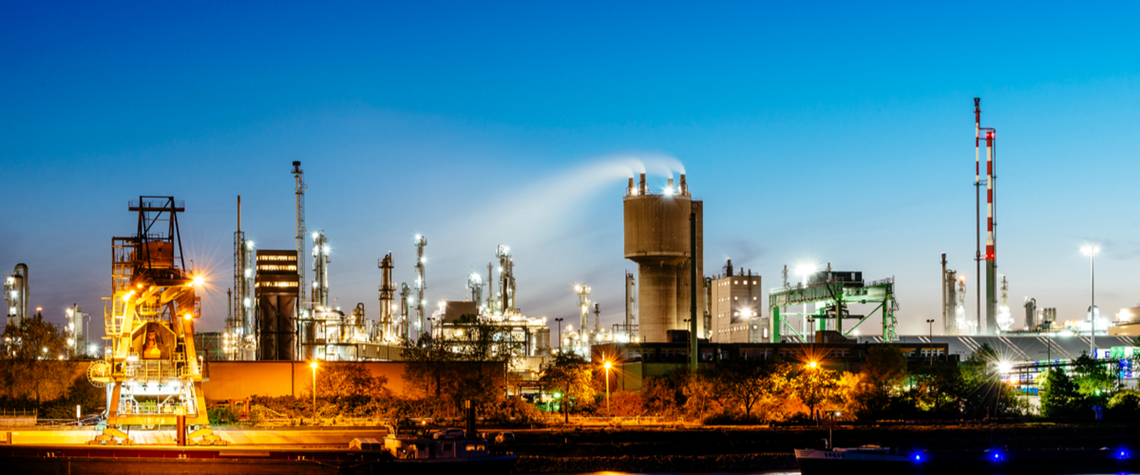Europe is striving for climate neutrality by 2050 with the European Green Deal. One of the milestones on this journey is to reduce CO₂ emissions by 55pc by 2030 compared with 1990 levels.
The urgency of this action is reflected in the latest report of the UN Intergovernmental Panel on Climate Change, which calls for a significant increase in ambitions to limit global warming. With the ‘Fit for 55’ package, the European Commission is now presenting a far-reaching set of measures to achieve these ambitious targets.
Transition Economist spoke recently to Volker Fitzner, global leader for chemicals at PwC, about Fit for 55 and the challenges and opportunities it presents for the chemicals sector. Fitzner, a chemicals and pharma life sciences specialist with nearly 25 years’ experience at PwC, moved into his current role earlier this year. He is based in Frankfurt am Main.
The chemicals sector is one of the most energy-intensive industries. How will its business models need to change in response to Fit for 55, especially in terms of energy supply?
Fitzner: The historically close collaboration of chemicals companies with oil and gas via petrochemicals is now being actively extended to the energy and utilities sector, with a focus on reliable access to renewable energy in large quantities and at reasonable prices.
The chemical industry's electricity needs will triple or quadruple if chemical production is to become carbon-neutral. Creating value while taking environmental, economic and social impacts into account is becoming the overarching management principle for companies, suppliers and customers in the chemical industry.
Only intelligent use of resources can generate sustainable growth. In order for this ecological transformation to succeed competitively and at high speed, an additional governmental framework is needed that not only enables but also actively promotes the rapid expansion of renewable energies and the associated transport infrastructure. New business models are emerging.
Tell us more about the specific energy-related challenges faced by the supply side of the chemicals sector.
Fitzner: The challenge is that, on the way to net zero, replacing fossil fuels with renewables and then as well by optimised new production methods, the electricity consumption will increase three- or fourfold—many people really do underestimate that.
It is not that you are replacing 1TWh of electricity from fossil fuels with 1TWh from renewables, you are replacing it with 3TWh or 4TWh from renewable sources. So the challenge is not only to have a stable supply of energy, but to have large quantities of renewable energy and ideally at a competitive price as well—that is the big challenge.
How are chemicals companies responding to this need for access to renewable power on such a large scale?
Fitzner: If you look at what chemicals companies are doing, they are pursuing different options— e.g. power-purchase agreements (PPAs), strategic partnerships, investments etc. (a few of those in parallel)—with one key strategy emerging: greenfield project investments alongside power and utilities companies. In the past, chemicals has been closely connected to oil and gas, obviously, and now what we see is a new form of sector convergence between power utility companies and chemicals companies.
A prominent example is the offshore wind deal where BASF has acquired a minority 49.5pc stake in Vattenfall’s 1.5GW Hollandse Kust Zuid windfarm. And then they get access to electricity from the windfarm through a long-term PPA.
Once fully commissioned, this will be the largest offshore windfarm in the world and secures significant volumes of fossil-free electricity for BASF. I guess this mode of action will be copied by other chemicals and energy-intensive companies, since it offers the greatest independence for energy sourcing and provides access to a huge amount of renewable energy in one transaction..
Another new collaborative model under sector convergence could be that chemicals companies and power utilities form an alliance and then bid jointly in tenders for offshore windfarms, rather than the utility bidding first and then looking for a partner later. This would avoid the lengthy M&A process.
How important will clean hydrogen be for the chemicals sector?
Fitzner: Clean hydrogen, produced from renewable energy, fits very well into the supply side and will play a key role in decarbonising the chemicals sector.
All the energy-intensive industries will need to use hydrogen to a big extent. And the technology is there. It needs to be scaled up, obviously. The far bigger challenge is the lack of clean hydrogen in sufficient quantity now and in the near future.
If you look at the chemicals industry in Europe, it will be an importer of hydrogen. So that is why the EU has developed a hydrogen strategy and a lot of collaborations and initiatives are being started with countries like Australia and Chile and with countries in North Africa.
Tell us about the opportunities for the chemicals sector as it develops its ESG strategy.
Fitzner: To succeed in the changing competitive landscape, chemicals companies should pursue a clear ESG journey starting with a thorough analysis of their customers from a sustainability perspective and combine this with an ESG-driven innovation strategy. Innovations here range from product and service innovations to the emergence of new business models that enable sustainable growth.
Chemicals companies have a great opportunity here to showcase the circular economy. Leading German but also foreign chemicals companies are moving in this direction in a structured and focused way. This is happening, for example, in the field of battery materials and recycling, where ecosystems emerge with battery materials provider, battery producers, electrical car makers and battery recycler collaborating.. Success will also depend on whether collaboration with external partners upstream and downstream in this new value chain functions efficiently.
The considerable changes in the use of resources—as well as downstream in the alignment to the likewise rapidly changing requirements on the part of customer industries—calls for significantly more sophisticated scenario planning that also takes disruptive developments into account. The decision-making processes and business workflows within the companies must also be realigned in this context.









Comments